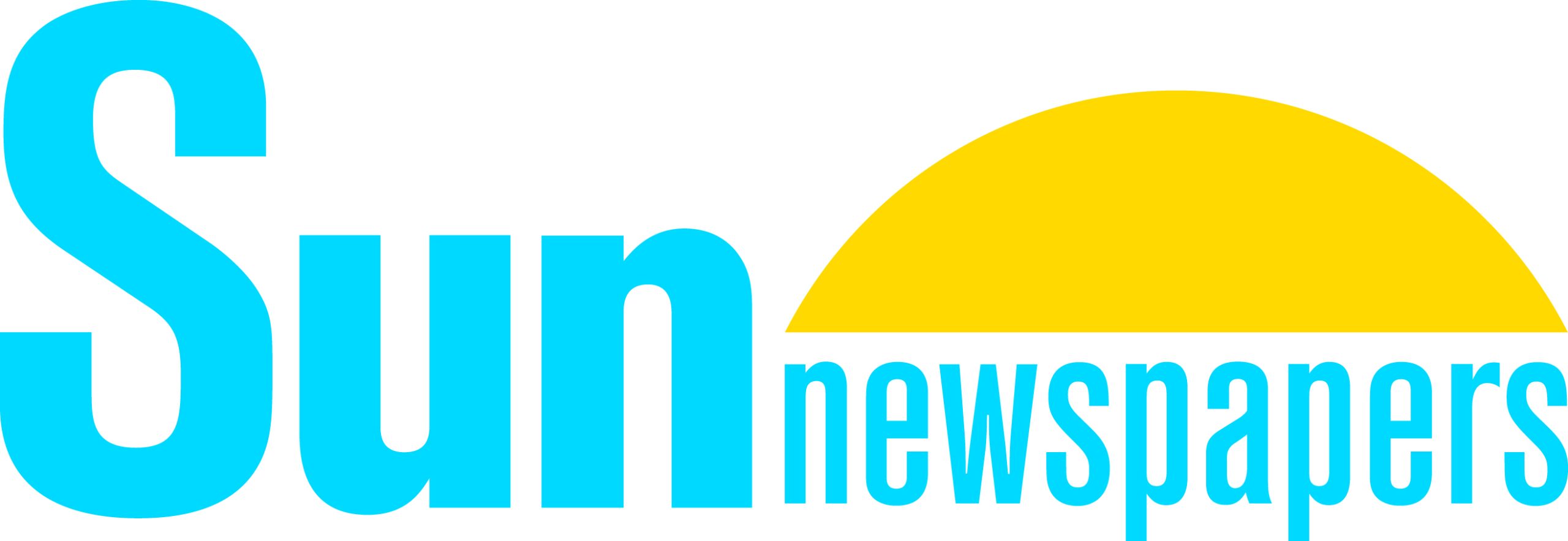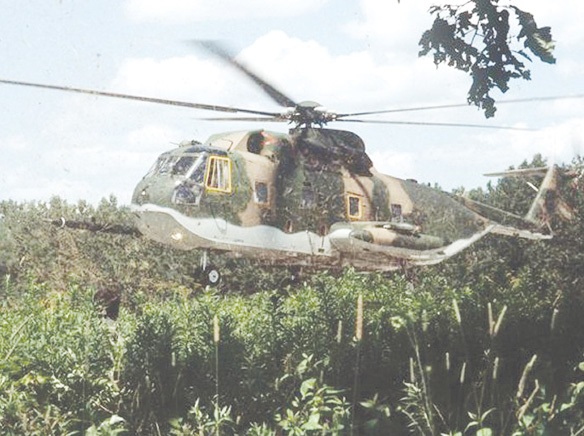As told to Michael H Pazeian. Second of two parts.
We were in country on Feb. 7, 1968. After many days of orientation, instruction and practice flights, our first combat mission was March 6.
There were always two Jolly Greens (HH-3E helicopters), low and high birds, that flew together for mutual support in case one went down.
Our rescue squadron also kept two Jollys each on alert during the day at three locations: Da Nang, Quang Tri, and airborne on orbit in the Gulf of Tonkin off the coast of North Vietnam. Sometimes the orbital Jollys would take off from Da Nang and fly directly to their orbit positions to fly at least two hours on station up and down the North Vietnam coast (some 25 -35 miles off shore).
That way they had immediate airborne capability to rescue downed crew members who bailed out having made it to the water or even if they didn’t, causing us to get involved with a most hazardous pickup over enemy terrain. But the alert Jollys at Quang Tri were used to supplement the regularly scheduled orbiting Jollys.
Mission #1
March 6 was a big day for me as I flew my first rescue mission as copilot where I was credited for making my first pickups. It was 4:00 a.m. when I rolled out of bed that morning, drove down to the flight line, took off from Da Nang Air Base at 6:00, and landed at Quang Tri at 7:00.
We (Capt. Stan McGhan and I, along with our assigned Paramedic and Crew Chief/flight engineer) were airborne again at 8:25 to take our turn flying the Gulf Orbit. Things were quiet, so we plugged into Crown 4 (HC-130 tanker) for some air refueling practice and continued to fly the elliptical orbit until we headed back to land at Quang Tri at 1030.
After lunch most of us slept for the next 2-and-a-half hours and probably would have slept the day away had the phone not awakened us at 2:30 p.m..
It was a scramble order for a possible pickup at 246°/24 (WSW, 24 miles) off Hue Phu Bai Marine Base. That was bad guy country, but this is the way Air Force Air Rescue does their business. So, to the rescue we went. It was a downed Marine CH-46 Sea Knight (call sign: Leopard Skin) that had been shot down while trying to make it to a landing zone (LZ) there on the east side of a mountain ridge lining the A Shau Valley.
The area was heavily jungled, but we had no trouble finding the site as we approached the area. Smoke from the crash site was visible from quite a distance away. Since we were “Hi Bird” for this mission we hovered around and watched the “Lo Bird” (Capt. Fred Otte and crew) pick up two of the injured crew members.
They departed the scene to get the injured men to a hospital. We were ready to drop down to recover the remaining crewmembers, but Crown advised us to hold off until we had a “High Bird” in the area to back us up. It took 30 minutes for Major Art Anderson and crew to get there and become “High Bird,” making us the “Lo Bird.’
We then maneuvered into position over the burning CH-46 and lowered our PJ (Paramedic) down the hoist to a position beside the crashed Sea Knight. He found only two crew members left, the copilot with a broken leg and the flight engineer (FE).
We were in the hover for approximately 30 minutes, but it seemed a lot longer. It was my first experience at hovering that long even though Capt. McGhan did the actual hovering. As an experience RCC (Rescue Crew Commander) he’d been through numerous rescues and was finishing up his tour of duty, leaving at the end of the month for the States.
He made it really easy for me to handle the radios and the intercom coordination with the crew while he flew the hover. But I must admit that I was a little uncomfortable (read that: scared) as while in the hover we were sitting ducks for any enemy snipers that might be in the adjoining hills. And when the fire in the CH-46 got to some ammo on board, catching it on fire, I became a little shook. I even saw tracers coming up my side of the Jolly. No rounds struck us though. The PJ called for the basket to be lowered as it would have been impractical to have brought the injured copilot up on the hoist/penetrator.
Once the injured pilot was on board, our FE lowered the penetrator, and our PJ and the other FE climbed on board to be hoisted back into our Jolly. As soon as they were in the door (I could always see such action from my copilot position on the left side looking out the cargo door where any rescued personnel were being brought on board) our FE gave the OK to break hover and speedily depart the hostile area.
We took the rescued Marine crewmembers to Hue Phu Bai for drop off with the medics. We refueled there and returned to the crash site as “Hi Bird” for Major Anderson and crew who had become “Lo Bird.” They put their PJ down by the crash site to search for any further survivors. He spent 20 minutes on the ground searching the surrounding terrain, but none were found. We held high at 4000 feet during this time avoiding any ground fire from enemy troops. Once the search was called off both Jollys departed. We refueled again at Quang Tri and later came back to Da Nang.
On the way back, we received a radio call to join up with another Jolly who just came off a rescue in Laos. They were having transmission problems and needed us to fly with them as a precaution in case they had to set their Jolly down somewhere. We always buddied up like this when there was any hint of mechanical problems. It turned out to be Major Billy Wingfield with his copilot, Stu Hoag, my roommate.
They had just made a rescue of an F-105 pilot that had been shot down in Laos. We didn’t land until a little past 8:00 p.m., and oh, what a welcome all the rescue Jolly crews got upon taxiing in. We were escorted to the Club where pictures were taken, and the changing of the numbers was celebrated. They always kept the record of the number of our squadron’s pickups. Capt. McGhan and my pickups on this date made the numbers 210 & 211 for the squadron. A big to do was made of it with slaps on the back and handshakes all around. I finally made it back to my bunk, and as I wrote in my diary, “I was really pooped.” It had been a day to remember.




